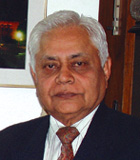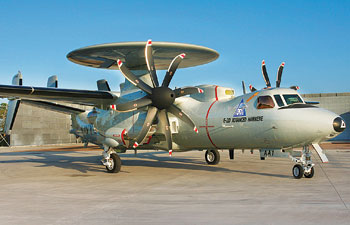INDIAN ARMED FORCES CHIEFS ON
OUR RELENTLESS AND FOCUSED PUBLISHING EFFORTS

SP Guide Publications puts forth a well compiled articulation of issues, pursuits and accomplishments of the Indian Army, over the years

I am confident that SP Guide Publications would continue to inform, inspire and influence.

My compliments to SP Guide Publications for informative and credible reportage on contemporary aerospace issues over the past six decades.
- Prime Minister witnesses 'Bharat Shakti' – a Tri-Services Firing and Manoeuvre Exercise in Pokhran, Rajasthan
- Interim Defence Budget 2024-25 — An Analysis
- Union Defence budget 2024
- Prime Minister Modi Commemorates Indian Navy Day in a Grand Ceremony
- Prime Minister Modi Flies in the LCA Tejas
- New Chapter in India-Italy Defence Ties
- Airpower beyond Boundaries
Japan's Defence Budget enhanced

The enhanced budget, which is meant to counter the rise of the inimical neighbour and its growing military activity in the region, is the largest ever in the last seven decades.
In an unprecedented move that is being viewed as a consequence of the rising tensions lately between Japan and China, further aggravated by territorial disputes in the East China Sea and the perception by the former of threat from the latter, in mid January this year, the Japanese cabinet headed by Prime Minister Shinzo Abe has given the green light to a $42-billion defence budget. This budget, which is obviously meant to counter the rise of the inimical neighbour and its growing military activity in the region, is the largest ever in the last seven decades. It also comes at a time when the Japanese economy does not appear to be in a very healthy state with problems further compounded by the burden of enormous social costs of an ageing population. However, the budget would have to be formally approved by the Japanese Parliament. This is unlikely to be an impediment as the coalition government headed by Prime Minister Shinzo Abe, enjoys majority in both houses of the Parliament.
 The turbulent relationship between the two Asian giants in the last 1,400 years of history that has generally fluctuated between extreme cordiality and hostility, is also been marked by two major wars and 11 minor conflicts of varying intensity. The first major war between the two was fought in the period 1894 to 1895 and the second in the period 1937 to 1945 when both the nations were embroiled in the World War II with allegiance to opposing camps. At the end of the War, Japan lay devastated. However, with the emergence in 1949 of the People’s Republic of China (PRC), there began a phase of cordiality in their relationship as also wide-ranging collaboration. However, as Japan was totally allied with the United States, the PRC also saw her as a potential threat even though she was devoid of military power. However, China always considered the rise of Japan as a military power in the future a real possibility. On the other hand, Japan is also apprehensive about Beijing’s intentions especially on account of her aggressive sovereignty claims in the region.
The turbulent relationship between the two Asian giants in the last 1,400 years of history that has generally fluctuated between extreme cordiality and hostility, is also been marked by two major wars and 11 minor conflicts of varying intensity. The first major war between the two was fought in the period 1894 to 1895 and the second in the period 1937 to 1945 when both the nations were embroiled in the World War II with allegiance to opposing camps. At the end of the War, Japan lay devastated. However, with the emergence in 1949 of the People’s Republic of China (PRC), there began a phase of cordiality in their relationship as also wide-ranging collaboration. However, as Japan was totally allied with the United States, the PRC also saw her as a potential threat even though she was devoid of military power. However, China always considered the rise of Japan as a military power in the future a real possibility. On the other hand, Japan is also apprehensive about Beijing’s intentions especially on account of her aggressive sovereignty claims in the region.
China is unlikely to permit this event to pass without notice and possibly action. The world may therefore soon witness increasing confrontation between the two nations. This would also serve the security interests of the United States as China will remain embroiled with regional issues, the objective of her containment as being pursued by the only superpower in the world. The hike in defence spending by Japan will bring in its wake a bonanza for US defence and aerospace majors as Japan will move forward to enhance her military capabilities through the acquisition of the latest of military hardware. The US will only be too willing to oblige. Japan depends largely on the US and partly on her indigenous capability in this field for her requirement of military hardware.
On top of the shopping list of the Japanese defence forces will be six of the fifth-generation F-35A Joint Strike Fighter Lightning II stealth combat aircraft at a cost of around $150 million per aircraft. Japan also plans to acquire five US-made Bell Boeing V-22 Osprey tilt-rotor aircraft priced at $68 million per unit. With a futuristic outlook, the Japanese Self-Defense Force is looking to induct a fleet of Global Hawk unmanned aerial vehicle that has a price tag in excess of $100 million per platform. The Japanese aerospace industry is to supply 20 of the indigenously produced Kawasaki P-1 maritime patrol aircraft which is already in service with the Japanese Maritime Self-Defense Force. The Japanese Ministry of Defense is also purchasing one E-2D airborne early warning aircraft to strengthen the nation’s capability to safeguard her air space both over the mainland and the island territories in the East China Sea. There is also a move to build indigenously one Aegis destroyer, fund the deployment surveillance units around the southern islands of Okinawa and Amami as also acquire 30 units of amphibious vehicles.
Despite the significant thrust towards militarisation, the Japanese Prime Minister maintains that the enhancement in the defence budget “did not mark a departure from Japan’s post-War pacifism or the strictly defensive posture of its armed forces”.
Any confrontation between Japan and China would have implications for India as well. While the strategic partnership between the largest and the most affluent democracy in South East Asia is definitely becoming stronger, it would be in India’s interest to maintain cordiality in the relations with China as well and avoid military confrontation. It would serve India’s interest to focus more on strengthening economic relations with both Japan and China and discretely avoid getting trapped into a political or military power play in the region by joining the American scheme to forge an alliance to contain China.






Former Air Officer Commanding-in-Chief of Training Command, IAFPhoto(s): By Navair